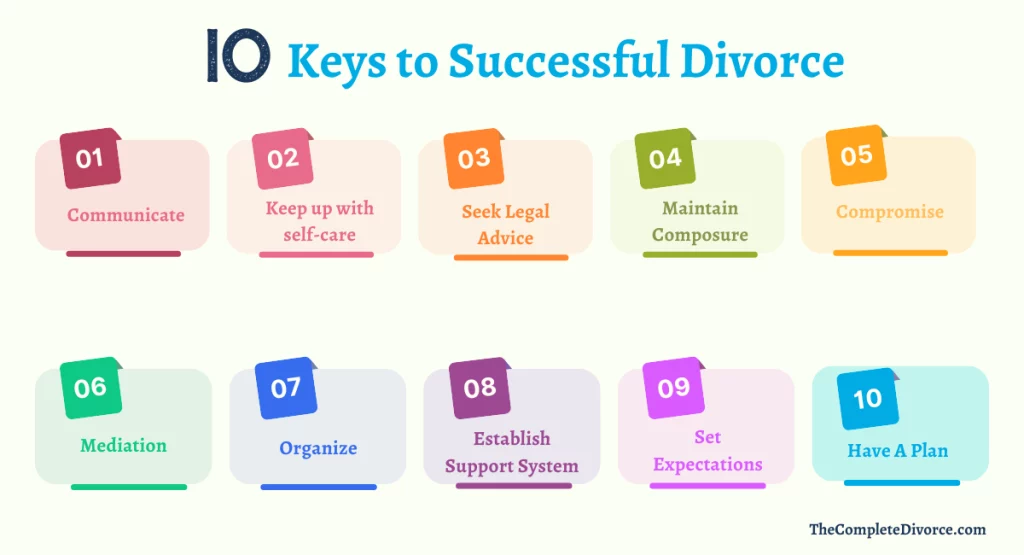
Share
Options for Dividing the Family Home in a California Divorce

Dina Haddad
Founder & Attorney Mediator
I’m Dina Haddad, a family law attorney-mediator in California. I’m so tired of couples not having a process that’s easy to complete their divorce. They are getting lost, wasting time and money, and beyond frustrated with their results.That’s why I created TheCompleteDivorce. I took my successful mediation practice and condensed it into an affordable and winning program.
Property to Divide in Divorce
There are common properties to divide in a divorce like the family home, retirement plans, employee stock plans, household items, and debts. You can divide these using the traditional divisions discussed, or use more creative strategies like holding the property jointly after divorce or constructing a payment plan for a buyout.
Options for the Family Residence
You have a number of options for the family home. You can sell the house, one of you can buy it from the other, or you could jointly own the home.
Sell the Home
If you sell the home, you divide the community proceeds from the sale. The sale proceeds are what you receive after you sold your house; the sale price less the mortgage, any other loans, and the costs to sell.
Once sold, you no longer own property with your spouse and can easily divide the cash between you. However, selling can have downsides. For example, you might want to avoid selling to keep your children in the house and avoid having to change schools and move away. On the other hand, you can minimize the impact by selling during your children’s summer break, a typically high-selling season, and avoid moving the children mid-year.
You can also include in your agreement that decisions to sell the house must be made jointly, like who will be the real estate agent, what will be the listing price, accepting an offer, and dividing the funds from escrow.
Buy-Out
If you want to keep the house, you can buy your spouse out of their ownership in the family home. You owe your spouse one-half of the community equity in the home. This is calculated as the fair market value minus the loans less any separate property. This amount is then divided in two. You can value the home using comparables, online sites, paying for a formal appraisal, or negotiating a value with your spouse.
You can purchase the property by taking less of other community properties; pay cash for what you owe, or refinance the house to take cash out to pay your spouse. This is called a cash-out refinance. It is an expensive option because you will be paying it back to the bank with interest, and you may end up increasing your mortgage payment. You can also combine these two options by taking less from another asset and paying the rest with the refinance.
You might also negotiate the costs to sell the property, including any taxes, and reduce the amount you need to pay your spouse. Although the judge would not reduce the value of your home for these costs, you can do so by agreement.
Unless your spouse agrees to stay on the home loan, you will need to refinance the loan to take your spouse’s name off the loan. You will only be able to refinance in your name if you qualify for the loan, showing that you have the income and assets to take a loan for the increased amount.
If you have trouble removing your spouse from the loan, see if your spouse would be willing to stay on the loan if you provide some safeguards. You might agree that you are 100% liable for the mortgage, and if you miss more than 1 or 2 mortgage payments, your spouse can require that you sell the house. The consequence may seem severe, but although you would be legally liable in family court, the lender can still come after your spouse; and, if you miss a payment, your spouse’s credit will be impacted. And, as long as your spouse is on your loan, your spouse’s ability to qualify for a loan will be limited.
If you are the one staying on the loan for your spouse, consider the risk that your spouse may miss a payment impacting your credit. Also, speak with a lender in your area to learn what the current requirements are for borrowing and whether you would qualify for your own loan if you stayed on the loan with your spouse. You might suggest to your spouse that your name must be taken off the loan if you need to buy a house upon a certain amount of notice, like 90 days. If your spouse fails to do so, you can require the house to be sold.
Deferred Sale & Co-Ownership
Another option is to postpone the house sale, called a deferred sale. Until you sell, you continue to co-own the house, typically as equal owners. However, one of you stays in the house and has sole and exclusive use. That person is responsible for agreed to expenses, such as the mortgage, property tax, home insurance, utilities, garbage, and basic upkeep, until the date to sell.
You want to include a firm sell date because it sets realistic expectations and prevents one spouse from keeping the equity in the home from the other. You can time the sale with the children finishing a significant school year such as graduating elementary or high school. If it comes time to selling, and you both agree, you can agree to extend the sale date.
If you choose to do a deferred sale, you need an agreement that set outs your responsibilities clearly; who will live in the house, who is paying what expenses, what your ownership interests will be, whether you can have a renter or romantic partner living there, whether you can take a loan against the house, and when the house must be sold. The more clearly your expectations are defined, the better the deferred sale will succeed.
Nesting
Sometimes in a deferred sale, couples will nest. In nesting, the children stay in the family residence, and the parents rotate between the family residence and a smaller place, like a one-bedroom apartment. The parents choose this arrangement so that the children are not disrupted and to save money on a second place. If you are considering this option, consult with a parenting coach or therapist. Nesting requires a lot from parents, from respecting each other’s space to being able to communicate well. Nesting should be in your children’s best interest, not just a financial benefit.
Review each of these options carefully and work with your spouse to reach the best solution for your family.
At TheCompleteDivorce, we provide you with what you need to successfully do your California divorce on your own. We provide all the required family law court forms in our automated forms program, all the video tutorials, and an automated customizable Marital Settlement Agreement (Divorce Agreement). If you need more help, you can get our package which includes time with a divorce mediator.
Before you go, consider if we can help you. We have helped thousands of couples in California. Our guided DIY divorce is successful and cheap! Our services are all 5-star!
Need more? Check out our full-service divorce mediation services, Families First Mediation, https://ffmediation.com.






